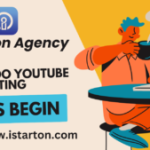

Table of Contents
- Understanding the Importance of Facebook Marketing
- Setting Up Your Facebook Business Page
- Crafting a Facebook Marketing Strategy
- Content Creation and Curation for Facebook
- Facebook Ads: A Deep Dive
- Leveraging Facebook Insights and Analytics
- Engaging with Your Audience
- Utilizing Facebook Groups for Community Building
- Advanced Tactics: Facebook Pixel and Retargeting
- Best Practices for Facebook Marketing in 2024
11. Conclusion
1. Understanding the Importance of Facebook Marketing
Facebook is more than just a social media platform; it’s a powerful marketing tool that allows businesses to reach. With its advanced targeting capabilities and a wide array of ad formats, Facebook enables of all sizes to:- Build Brand Awareness: Reach new audiences and introduce your brand to potential customers.
- Drive Traffic: Use Facebook ads and posts to direct traffic to your website, blog, or online store.
- Generate Leads: Collect information from potential customers through lead generation ads and forms.
- Increase Sales: Utilize Facebook’s e-commerce features, such as Facebook Shops and Instagram Shopping, to sell products directly on the platform.
- Engage with Customers: Foster relationships and loyalty through consistent communication and engagement.
2. Setting Up Your Facebook Business Page
To start leveraging Facebook for your business, you need to set up a Facebook Business Page. This is different from a personal profile and provides features tailored for businesses. Steps to Create a Facebook Business Page:- Log into Facebook: Use to create a Business Page. Don’t worry; your personal information won’t be displayed on the Business Page.
- Go to ‘Create’: Find the ‘Create’ option on the top right corner and select ‘Page.’
- Choose Your Page Type: Select ‘Business or Brand’ to create a page that suits your business needs.
- Fill in Your Business Details: Enter your business name, category, address, and phone number. Make sure the information is accurate and complete.
- Add Profile and Cover Photos: Use high-quality images that represent your brand. Your profile photo could be your logo, and the cover photo can be what your business is about.
- Complete Your Page Info: Fill out the ‘About’ section with a compelling description of your business mission. Include a link to your website and other social media profiles.
- Customize Your Page: Use tabs and templates to organize your page’s layout. Customize the call-to-action button based on what you want visitors to do (e.g., ‘Shop Now,’ ‘Sign Up,’ ‘Contact Us’).
3. Crafting a Facebook Marketing Strategy
A well-thought-out Facebook marketing strategy is crucial for success. Here’s how to craft one:Identify Your Goals
Start by defining what you want to achieve with Facebook marketing. Common goals include increasing brand awareness, generating leads, driving traffic, and boosting sales. Your goals will dictate your content and ad strategy.Understand Your Audience
Knowing your audience is key to creating relevant content. Use Facebook Insights to analyze your current followers’ demographics, interests, and behaviors. Create buyer personas to understand their pain points, preferences, and what motivates them to engage with your brand.Competitor Analysis
Analyze your competitors’ Facebook pages to understand what works in your industry. Look at their content, engagement rates, and ad strategies. This can provide valuable insights into what your audience might be interested in.Content Strategy
Plan your content calendar ahead of time and entertaining posts to keep your audience engaged. Utilize different content types, such as images, videos, articles, infographics, and live streams.Set Your Budget
Determine how much you’re willing to spend on Facebook ads. Your budget will affect your ad strategy, including the type of ads you can run and the audience you can target. Start with a small budget and scale up as you see results.Measure and Adjust
Regularly review your performance metrics to understand what’s working and what’s not. Use this data to adjust your strategy and improve your results over time.4. Content Creation and Curation for Facebook
Creating compelling content is at the heart of any successful Facebook marketing strategy. Here’s how to craft content that resonates with your audience:Types of Content
- Visual Content: Images and videos are highly engaging on Facebook. Use high-quality visuals to capture attention and convey your message quickly.
- Text Posts: Short, compelling text posts can spark conversations and engagement. Use them to ask questions, share updates, or express opinions.
- Live Videos: Live videos have high engagement rates because they allow real-time interaction. Use them for product launches, Q&A sessions, or behind-the-scenes glimpses.
- Stories: Facebook Stories are short, content that disappears after 24 hours. They’re great for sharing quick updates, behind-the-scenes content, and promotions.
- Curated Content: Sharing content from your audience can position you as a thought leader and provide value to your followers.
Content Best Practices
- Consistency: Post regularly to keep your audience engaged and maintain visibility in their news feeds.
- Quality Over Quantity: Focus on creating high-quality content that provides value to your audience rather than posting frequently with little purpose.
- Engagement: Encourage engagement by asking questions, responding to comments, and hosting interactive content like polls and quizzes.
- Brand Voice: Maintain a consistent brand voice that reflects your company’s personality and values.
5. Facebook Ads: A Deep Dive
Facebook Ads offer a powerful way to reach your target audience with precision. Here’s a detailed look at how to create and optimize Facebook ads:Types of Facebook Ads
- Image Ads: Simple yet effective, image ads use a single image to capture attention and convey your message. Ensure your image is high-quality and directly related to your ad copy.
- Video Ads: Video ads can be more engaging than image ads as they allow you to tell a story. Keep videos short and include subtitles for those who watch without sound.
- Carousel Ads: Carousel ads allow you to showcase up to ten images or videos in a single ad. They’re ideal for displaying multiple products or telling.
- Collection Ads: These ads feature a cover image or video followed by several product images. When clicked, they open into a fullscreen mobile experience.
- Lead Ads: These ads include a form to collect user information without them having to leave Facebook. They’re perfect for collecting leads, newsletter sign-ups, or event registrations.
- Dynamic Ads: These ads automatically show the right products to people who have expressed interest on your website, in your app, or elsewhere on the internet.
- Messenger Ads: These ads appear in the user’s Facebook Messenger app and can open a conversation with your business.
Creating a Facebook Ad Campaign
- Set Your Objective: Choose an objective that aligns with your business goals, such as brand awareness, traffic, engagement, leads, app installs, sales, etc.
- Define Your Audience: Use Facebook’s targeting options to define your audience based on demographics, interests, behaviors, and more. Consider using custom audiences to target people who interacted with.
- Choose Your Ad Placement: Decide where you want your ads to appear. You can choose automatic placements to let Facebook decide where your ads are best, or you can manually select placements like Facebook Feed, Instagram Feed, Stories, Messenger, etc.
- Set Your Budget and Schedule: Choose between a daily budget (how much you’re willing to spend per day) and a lifetime budget Set a start and end date for your campaign.
- Create Your Ad: Upload your visuals, write your ad copy, and include a call-to-action button. Ensure your ad is visually appealing and your copy is compelling.
- Review and Publish: Double-check all your settings and click ‘Publish’ to launch your ad.
Optimizing Your Facebook Ads
- A/B Testing: Run A/B tests with different visuals, ad copy, and targeting options to see what performs best.
- Monitor Performance: Use Facebook Ads Manager to track your ad performance. Look at metrics like click-through rate (CTR), conversion rate, cost per click (CPC), and return on ad spend (ROAS).
- Adjust and Scale: Based on your performance data, adjust your ads to improve results. Scale up your budget for high-performing ads to maximize your ROI.
6. Leveraging Facebook Insights and Analytics
Facebook Insights provides valuable data about your page’s performance, helping you understand your audience and optimize your content strategy.Key Metrics to Track
- Reach: The number of people who



